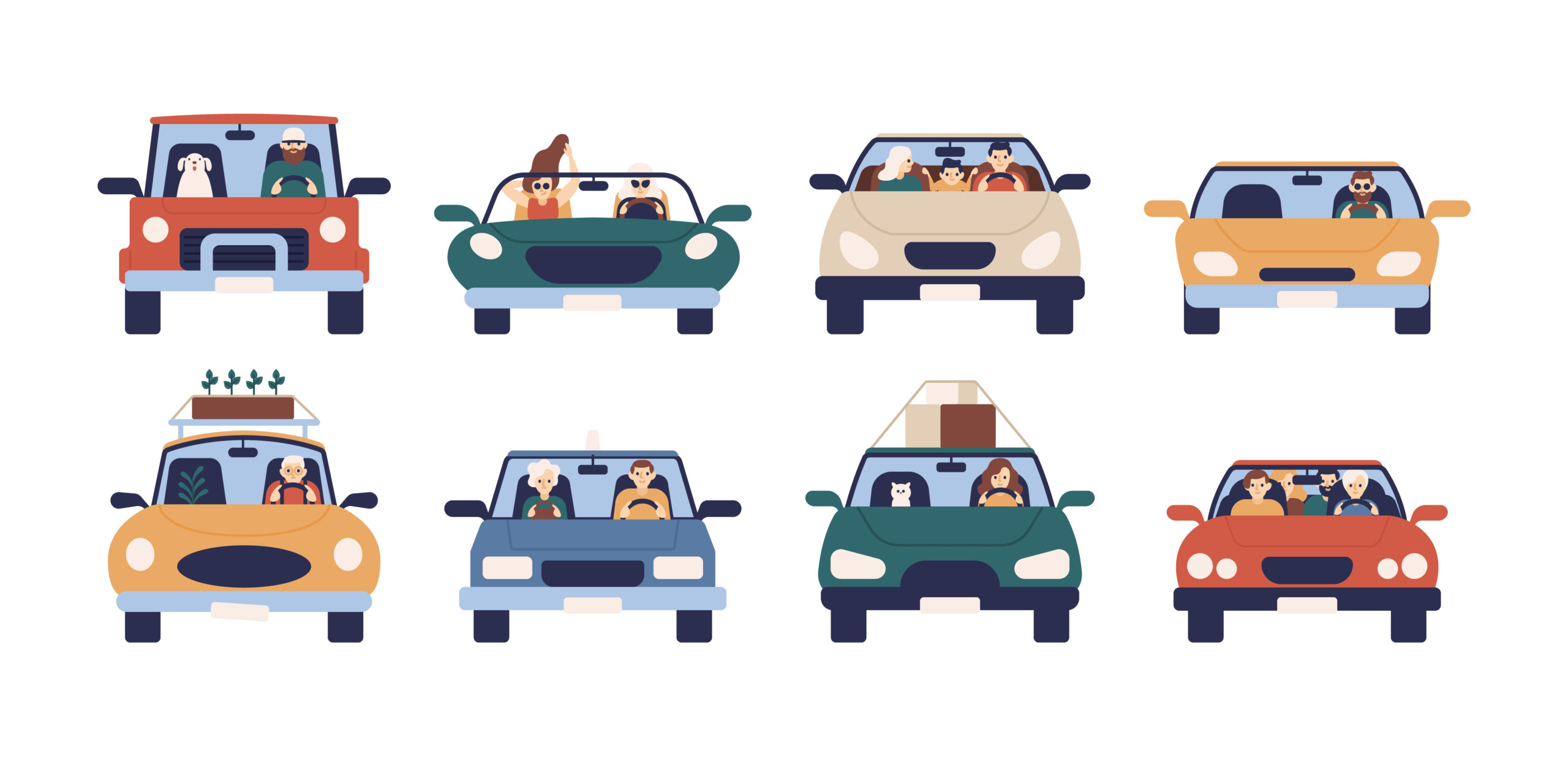
So, how was your weekend? What did you end up doing?
Actually, I can predict what you didn’t do over Memorial Day Weekend. You didn’t go to the movies. You didn’t go bar hopping taking Ubers or Lyfts. You didn’t jump on a plane and go to the Bahamas for the weekend. You didn’t go see your hometown team play baseball. And you sure didn’t take one of those 3-day cruises.
Many of the activities we’ve enjoyed during every other Memorial Day Weekend was either off-limits or it had been cancelled.
But if you did manage to get out, chances are you did so in the safety of your car. Here in Michigan, that typically means going “Up North.” Just a few hours from Metro Detroit is a paradise of lakes, parks, trails, and other family-friendly activities. And you can get there from the safety of your car, van, SUV, or truck.
The other day, I was busily WFH (of course) when I heard a cacophony of car horns out the window. My wife went to check because it sounded ugly. But instead, it turned out to be that rapidly growing new phenomenon – the drive-by birthday.
The personal car is making a comeback, thanks in no small part to a global pandemic that makes public transportation or even something as simple as taking an Uber seem…well, downright scary.
The last few years at CES, it’s been the one-two punch of autonomous and electrification for the auto industry. Many carmakers have poured billions into both initiatives. But thanks to the pandemic, the shift is moving rapidly away from self-driving and shared mobility, and is now more focused on efficient electric vehicles.
According to the Detroit News‘s Kalea Hall, Ford has put its autonomous 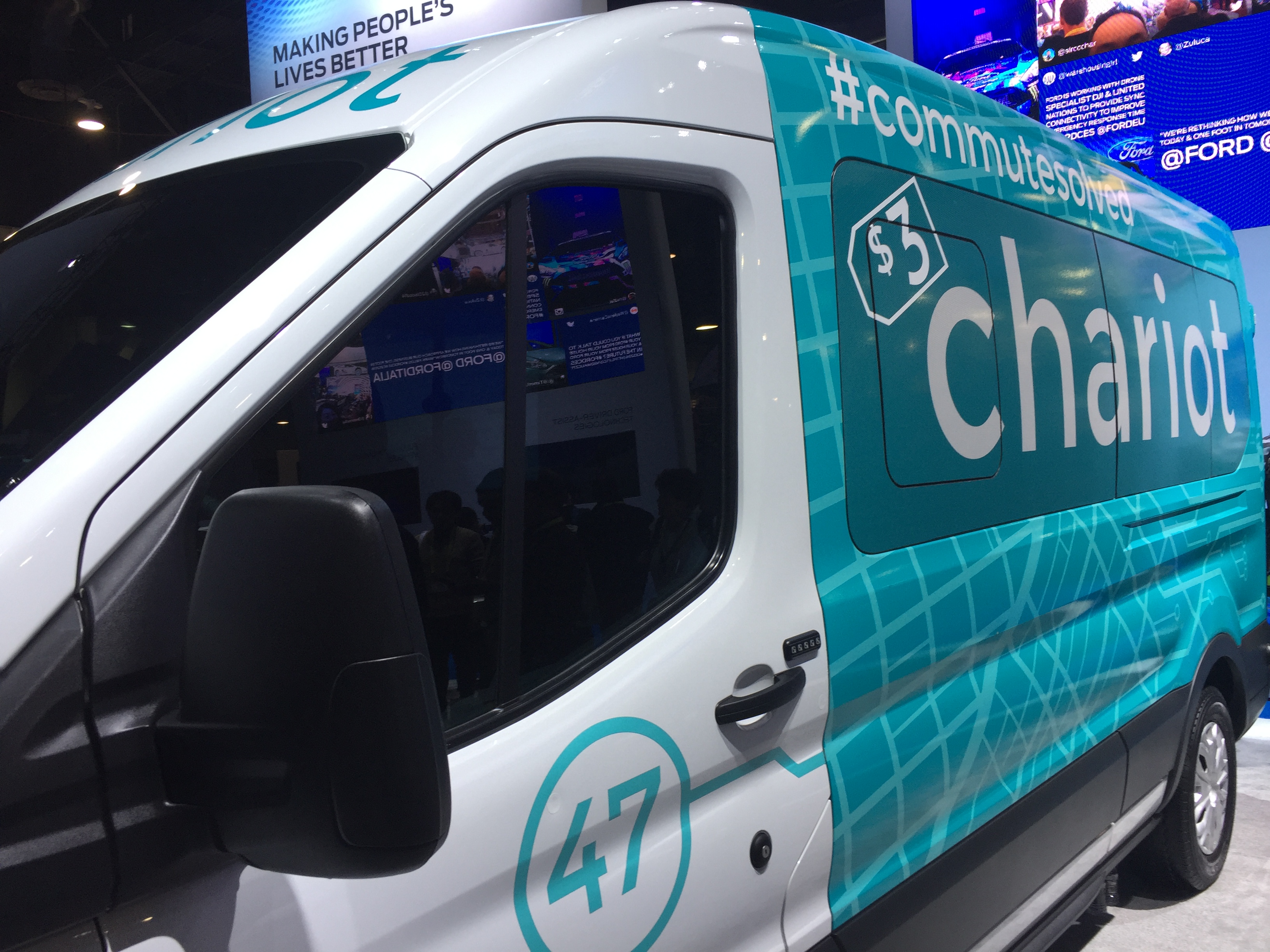 program with Argo AI on hold until 2022. They’ve also sold their subscription service, Canvas, while ending Chariot – their shuttle service last year.
program with Argo AI on hold until 2022. They’ve also sold their subscription service, Canvas, while ending Chariot – their shuttle service last year.
GM is shuttering Maven, its sharing service, while Google’s autonomous arm, Waymo, temporarily suspended both road testing and ride hailing operations in Arizona.
Uber – which has enough problems with its core service – recently announced layoffs of 3,500 in its Advanced Technologies Group (yes, autonomous), thanks to the ravages of COVID-19.
Driving your own car has never looked so good – or seemed so safe. Last week, the New York Times ran a beautiful photo essay whose title says it all:
“Together, Alone: The Car as Shelter in the Pandemic”
Writers Christine Hauser and Judith Levitt note that “it took a pandemic to give the automobile its new role.” And while we talked about how the growing Work From Home trend could likely be erosive to radio, it may be made up by the additive listening that takes place as consumers retreat to their rolling havens – their cars.
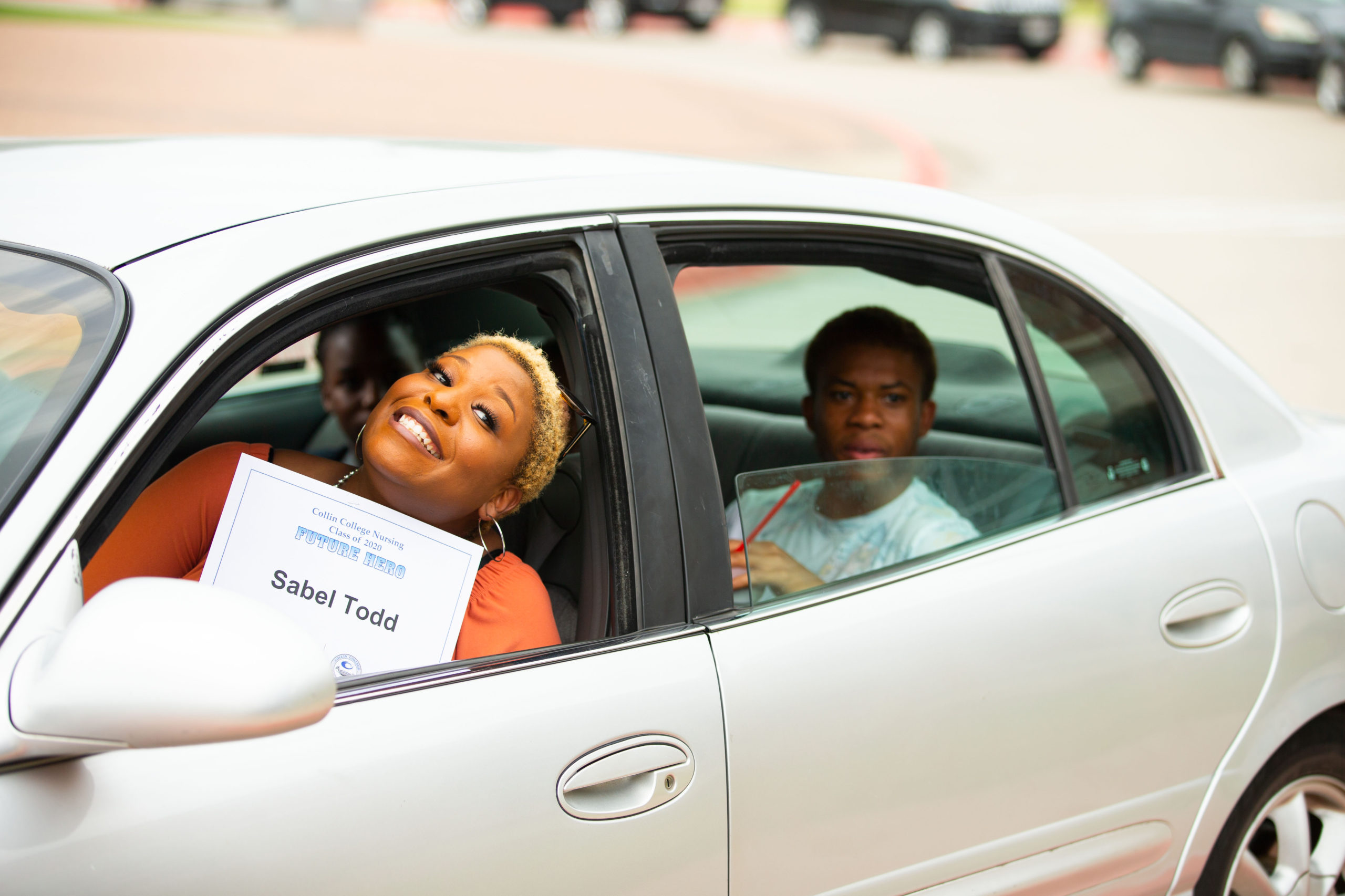 As the writers point out, “mobile safe distancing” is ushering in a spate of new activities – we’re going to drive-ins again, not just for movies, but for concerts and even weddings. And we’re now celebrating birthdays, graduations, anniversaries, and even deaths with drive-by ceremonies.
As the writers point out, “mobile safe distancing” is ushering in a spate of new activities – we’re going to drive-ins again, not just for movies, but for concerts and even weddings. And we’re now celebrating birthdays, graduations, anniversaries, and even deaths with drive-by ceremonies.
The drive-thru has essentially saved fast food restaurants during the pandemic. Whether it’s grabbing a cup of Starbucks, a Whopper, or Big Mac, that drive-thru lane has been a salvation.
Curb-side pickup has become a way of life for grocery shopping, carry-out, and many other transactions, thanks to the safety of our Foresters, A4s, Wranglers, Rams, and Edges.
And then there’s the ease and convenience of drive-thru testing for COVID-19, a convenient way to gain assurance about your health from the relative comfort 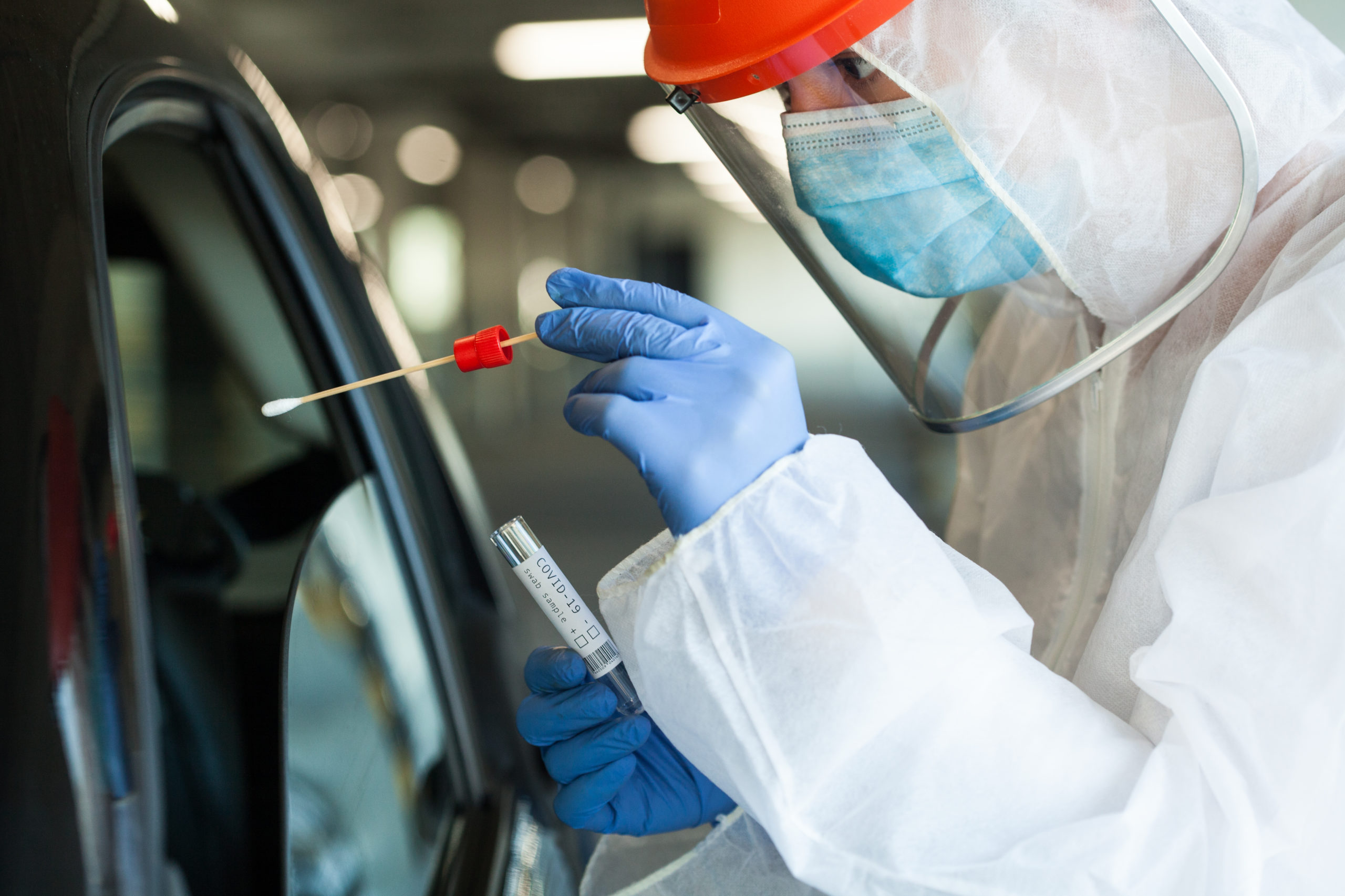 and safety of a car. Millions are now being tested while the motor’s running and there’s a radio station playing in the background.
and safety of a car. Millions are now being tested while the motor’s running and there’s a radio station playing in the background.
More and more, consumers are finding a renewed sense of freedom in their cars. If you’re of a certain age or you remember seeing American Graffiti, that feeling of living through and in your car has returned. And by extension, so has radio listening.
In our newest COVID-2 study of commercial, public, and Christian music listeners, we learn even more about how this pandemic has changed people’s lives, their work, and their activities.
But when we asked commercial radio respondents (pictured in the chart below) about their plans for “next week,” we learned most revolve around their cars. In fact, eight of every ten say they’ll be using their vehicles to go from Point A to Point B – or just to simply take a ride.
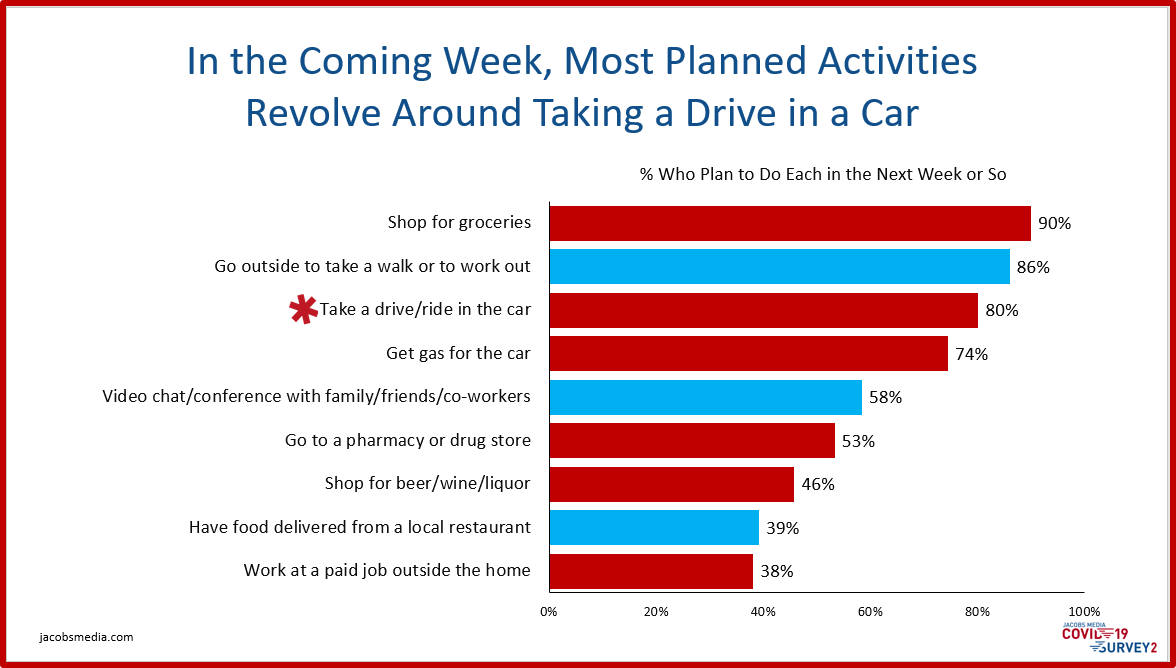
Axios reports on a new Harris poll of 2,000 adults here in America where half do not feel safe traveling in any vehicle – other than a personal car. And a whopping one in five (19%) now say they’re now planning on purchasing a vehicle – nearly twice the number that were in the market for a car just a few short weeks ago.
And radio continues to rule when consumers are on four wheels. Even with the onslaught of new media access via smartphones and dashboard apps, broadcast radio still dominates in the car. That’s true whether you’re looking at Edison’s Infinite Dial surveys, or the thousands of core listeners in our annual Techsurveys. Edison/Triton’s newest study reveals that while there’s in-dash competition, half of American adults who’ve been in a car in the last month say their go-to source is AM/FM radio.
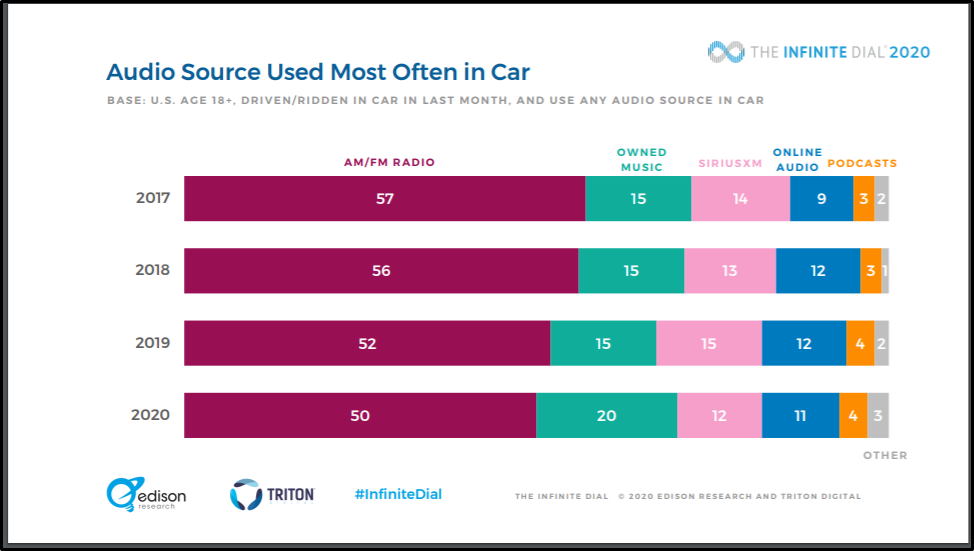
As more and more consumers head to the safety and sanctuary of their personal vehicles, most broadcasters I know will take those odds any day.
We’re in the beginning of the next phase of COVID-19 – the reopening. And here’s where local broadcast radio can play a major role in the economic recovery. Car companies and the dealerships that represent them have to make up for lost time. The good news is that millions will be in the market for a new vehicle as the data tell us – but they’d rather not be traipsing into showrooms, haggling with salespeople, and taking long test drives.
Browsing, shopping, price comparing, negotiating, and purchasing is rapidly moving online, and dealerships are scrambling to adjust. Fortunately for them, service departments have been (mostly) open through the course of the pandemic, and will continue to be. But a dealership’s metric for success is changing, moving from showroom traffic to landing page views.
Of course, radio can deliver either, and thanks to its local presence and trusted personalities, those live read testimonials may carry even more weight as the pandemic moves into this new phase. All of that, of course, assumes that hometown stations retain their revered personalities and create strong marketing packages for car dealers, as well as the myriad businesses trying to recover from the worst months they’ve ever experienced.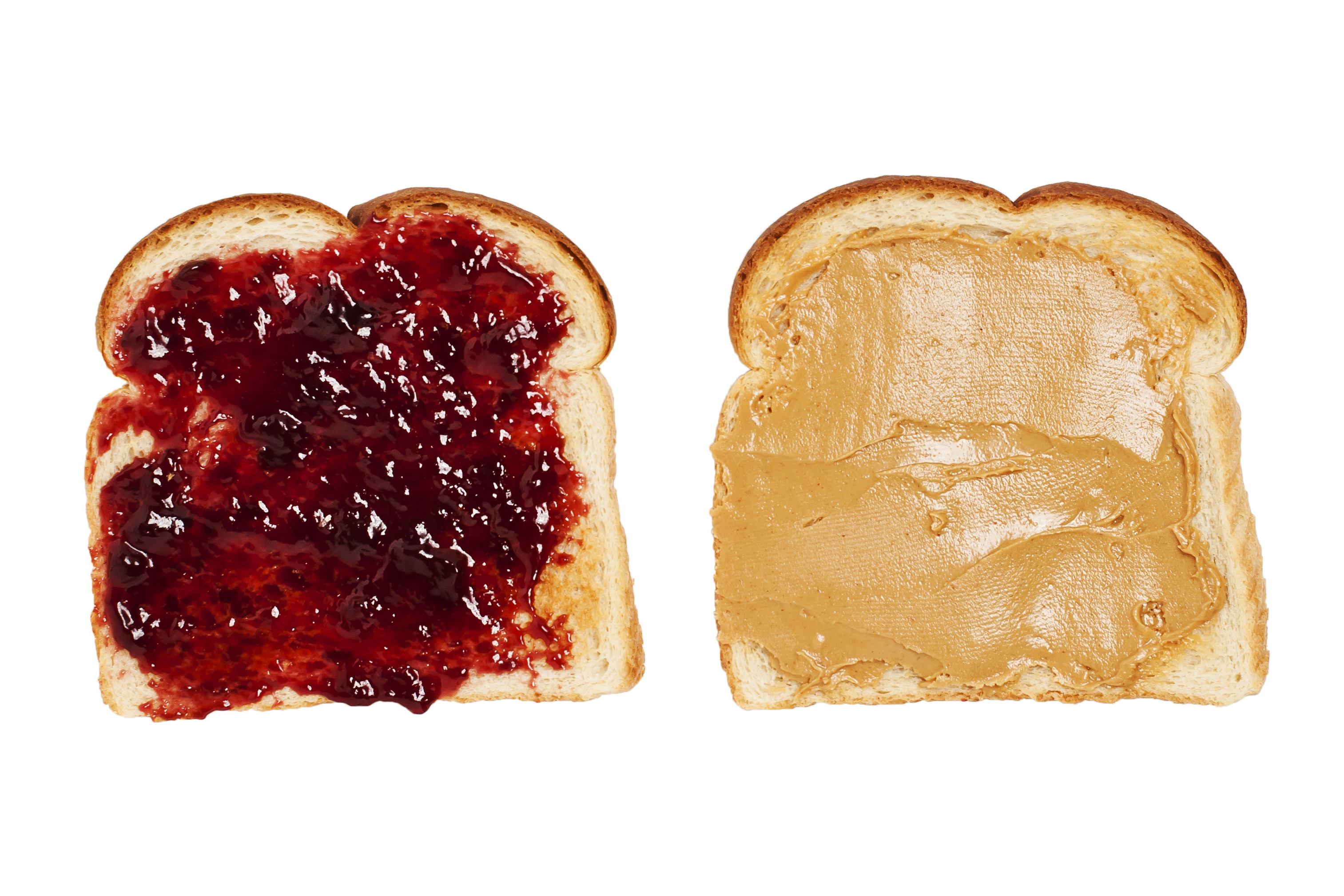
One thing is for sure – this pandemic giveth and taketh away. Once-thriving businesses are now distressed or saying “uncle.” Others that were written off as dead in the water are finding themselves back in the saddle.
For radio broadcasters, the personal car is its best bet – just like always. I have long referred to the bond between cars and radio as a “peanut butter and jelly” relationship, ironically my favorite lunch during the COVID-19 saga.
It’s time to open up a new jar of extra crunchy and jam.
The car – and radio – are back.
- Media And Technology In 2025: Believe It Or Not! - April 18, 2025
- In Radio, You Just Never Know - April 17, 2025
- The Secret To Making A Great Podcast (And Great Radio) - April 16, 2025




In the immortal words of Gary Numan:
Here in my car
I feel safest of all
I can lock all my doors
It’s the only way to live
In cars
Here in my car
I can only receive
I can listen to you
It keeps me stable for days
In cars
Now try getting THAT song out of your head!
HOW DID I MISS THAT??
Roadrunner, roadrunner,
Going faster miles an hour.
Gonna drive past the Stop ‘n’ Shop,
With the radio on…
The greatest love letter to the car and radio (and to Massachusetts) and unfortunately no one plays it.
And thank you, Mike.